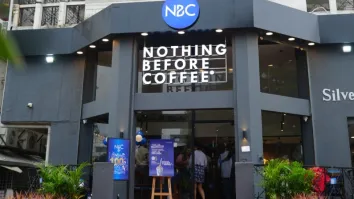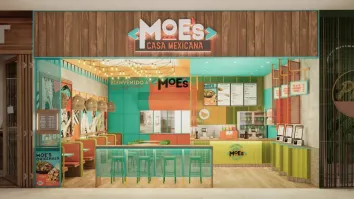
Seven ways to identify trends and use them to evolve your business
It’s easy to connect ‘future tech’ terms like ‘artificial intelligence’, ‘blockchain’ and ‘internet of things’ with certain industries. For example, with even limited knowledge, we can understand how these trending technologies can play a role in sectors such as software and hardware development, banking and manufacturing. But the food and beverage industry...?
The reality is that emerging tech is starting to play an increasing role in many aspects of our day-to-day life, including dining. QSRs especially are prime candidates for the use of the latest technologies – and their customers are demanding it.
Millennials, in particular, have high expectations of technology and insist on a quick and easy experience with all meal information at their fingertips. If a venue doesn’t deliver, they will vote with their feet and head off to another that does.
The Eating Out in Australia 2017 survey of more than 2,000 venues and consumers reports that the online virtual world is increasingly overlapping with the physical experience of eating out. It also says that customers are becoming harder to please. “The customer is...often demanding, inconsiderate, or downright rude. Venue operators have noticed customers are expecting more,” it says.
Savvy restaurateurs know that one way to make sure they stay on top of this virtual world and use it to keep customers happy is by monitoring industry trends and adapting to them. They understand that if they can do this successfully, they will be able to engage consistently with customers and deliver an excellent dining experience. This way, they are sure to stay one jump ahead of their competition.
What is a trend and how do you spot one?
So, what exactly is a trend and how do we identify one? In a retail environment, such as F&B, it’s all about consumers: what they want, how they behave and how this influences the way they interact with the world around them. It could be a new expectation or behaviour or a change in opinion or attitude.
Trends are built on a basic need (in the F&B scenario, it’s eating). A driver of change then comes along, such as a novel way of meeting this need and doing it in a better way. The third ingredient is innovation – the actual product, service, technology or experience that resolves this desire to do something bigger and better.
This then creates a new level of customer expectation, which in time becomes the norm – ready for the next trend to disrupt it in time.
So, how does a business owner in the F&B industry remain competitive and make sure they retain their share of the eating out pie? We all know it’s not an easy industry to make money in. It’s competitive, has a low cost to entry and comparatively little regulation. It also has a number of challenges, including finding, retaining and paying for good staff. So, how do they make sure they don’t get left behind when the next great trend comes along?
Business and technology magazine Inc. suggests seven ways to identify and evolve with trends in your industry, to avoid this happening:
- Stay plugged in to industry research and trends reports.
- Regularly follow publications and influencers in your industry.
- Use different tools and analytics systems to identify the direction trends are heading.
- Connect with smart people who have industry knowledge.
- Build and maintain a close group of advisors.
- Ask the right questions, and listen to your customers.
- Learn to accept – and even embrace – change.
How do you incorporate trends in your venue?
Food trends used to change slowly, giving those in the F&B industry time to consider all factors before making a well-informed decision. However, we are now well into the ‘age of acceleration’, where the rate of change driven by technology is exponential.
Consumers used to be happy as long as they regularly got their fill of new and personalised apparel, accessories and devices. Nowadays this is the baseline for every part of their life, including food. Think about how, increasingly, QSRs, in particular, allows you to ‘build’ your own meal. This ensures you have a unique experience whether you’re vegetarian, vegan, gluten-free, Paleo, or have any other taste or preference.
Because many consumer expectations are driven by our experiences with technology, it makes sense to turn to tech to see how it can help in the F&B industry. Smart restaurateurs are realising that it doesn’t take a huge financial investment to add a layer of technology to their existing infrastructure which can drastically change their operating model.
These business owners are experiencing the kind of exponential growth that technology laggards are dreaming of. They are seeing average item and order values increase, table turns speed up, and labour costs decreasing. All of this adds to their bottom line.
Adapting to this new competitive dining landscape requires a first step though. Fortunately, there are vendors like TabSquare who have been in on the ground floor of technology in the F&B industry and who are willing to take businesses on the technology journey with them.
TabSquare’s client experience gives you an edge over competitors
The TabSquare experience starts with a dedicated account manager, who works closely with clients to help them develop promotions. They learn the parameters of any promotions or offers and what the client wants to achieve through them. The account manager then coaches the client on how to implement these promotions into TabSquare’s smart solutions.
Implementation is straightforward through TabSquare’s Content Management System (CMS) for SmartTablet and SmartKiosk. The client simply loads the required information to create a new menu, a time-based promotion or new category, for example. The account manager then provides guidance on how to accommodate these promotions into a menu solution – acting as an analyst and campaign manager.
TabSquare’s solutions capture extensive data on client behaviour. The account manager analyses this information, gains insights, then reports to the client on these behaviours. Most importantly, any trends that present through the data are highlighted for action.
Customer demographics and spend available in real-time
Large corporations and franchises, for example, want to understand how each menu is performing, by region and sector. This includes understanding what food and beverages are trending, what the top-selling items are, as well as customers’ demographics and spend. This is all available through TabSquare’s extensive data set and presented through an easy-to-understand real-time dashboard.
TabSquare can identify quickly and easily which dishes are most popular and fast-moving. The account manager will then advise whether there’s an opportunity to increase pricing, or how to promote them better through TabSquare’s solutions.
The data gathered through TabSquare also provides detailed insights on the best approach on the staffing front. By identifying peak periods and order volumes it allows a business owner to optimise staffing levels to avoid waste and maximise profit.
TabSquare understands each venue is unique and will work with the client to customise the solution to make sure it meets their needs perfectly.
Given the pace of change in the F&B industry, it’s imperative for venue owners to move quickly to understand the technology options that are available and adopt those that will work for them. Being nimble is the key to survival in this highly competitive environment.
As Klaus Schwab, Founder and Executive Chairman of the World Economic Forum, is quoted as saying: “In the new world, it is not the big fish which eats the small fish, it’s the fast fish which eats the slow fish.”
(Download TabSquare's white paper here to find out how to move your venue into the digital age.)



























